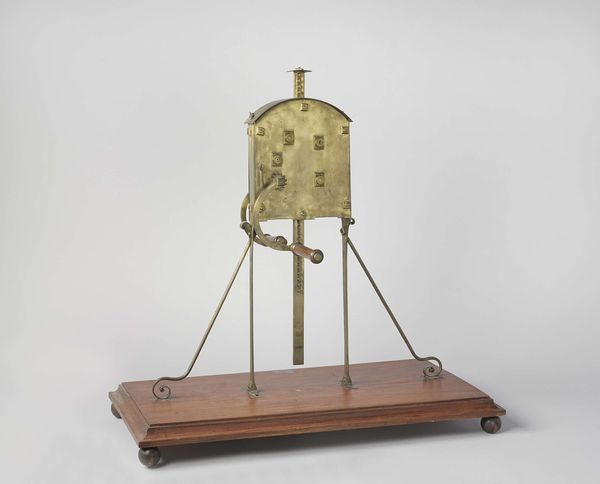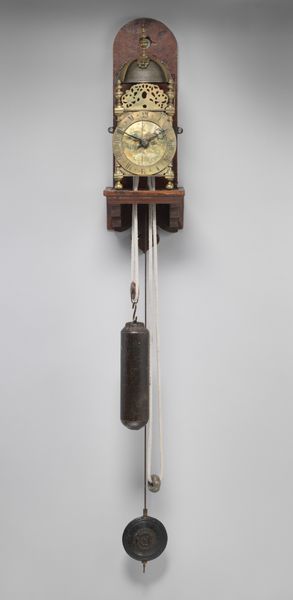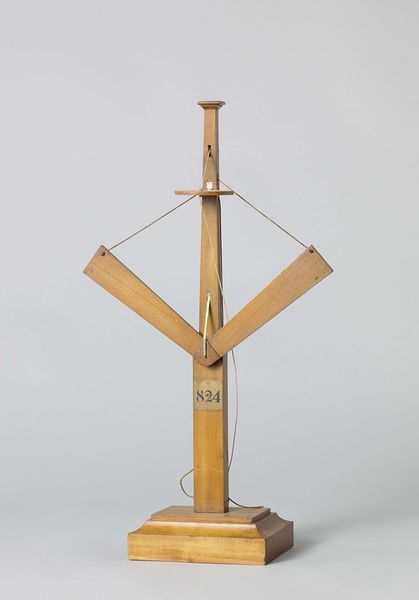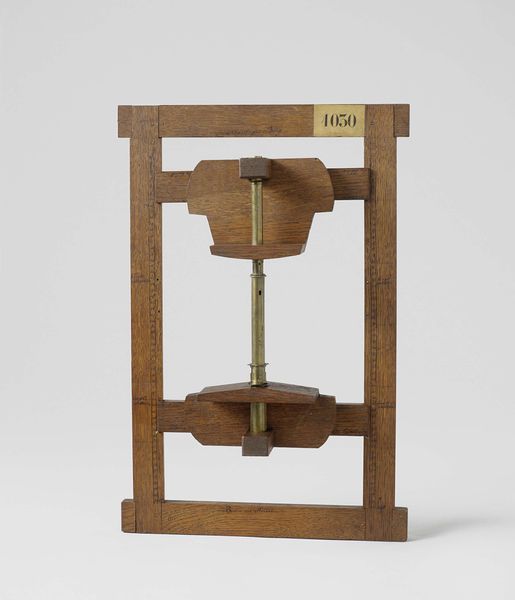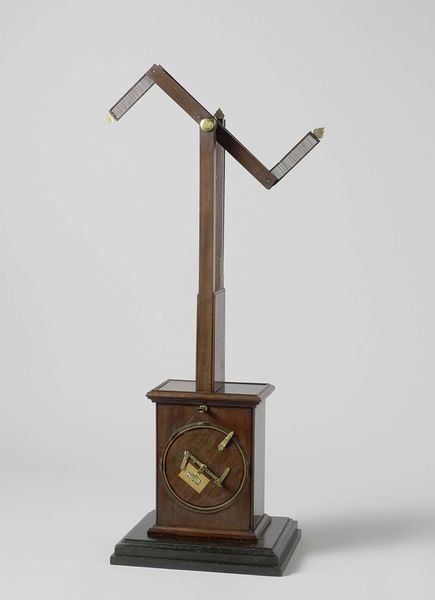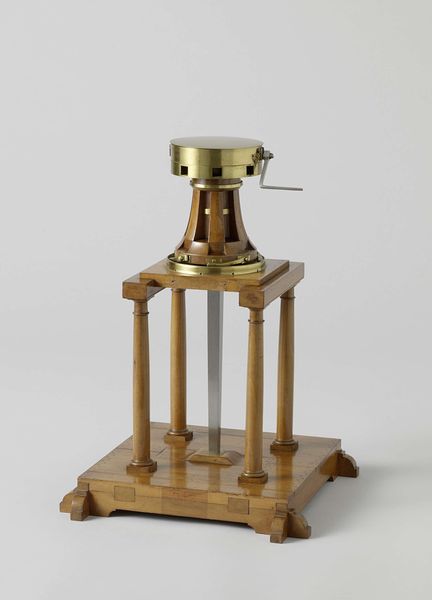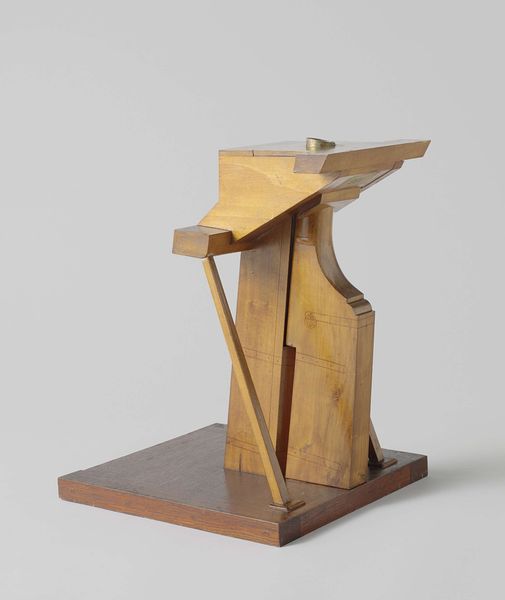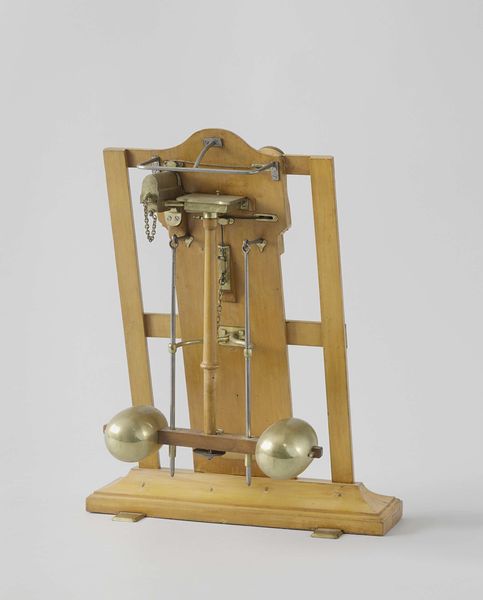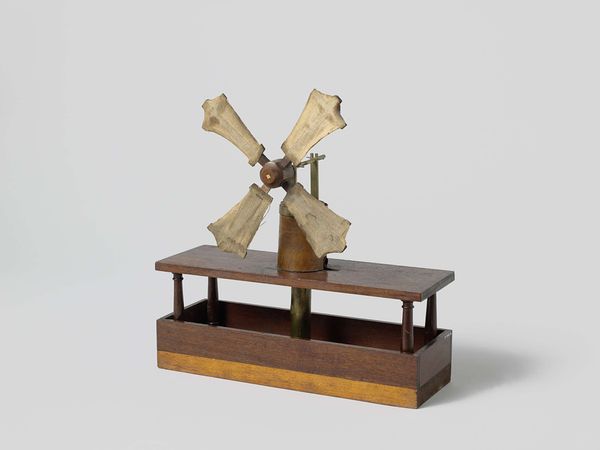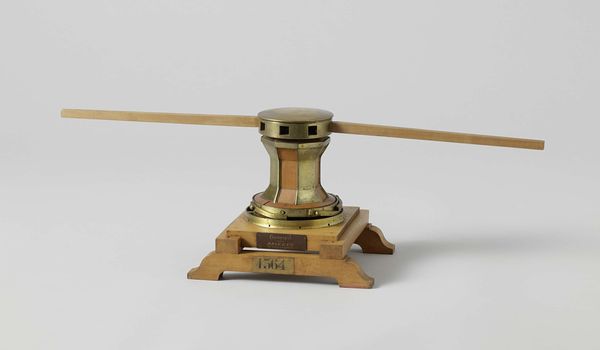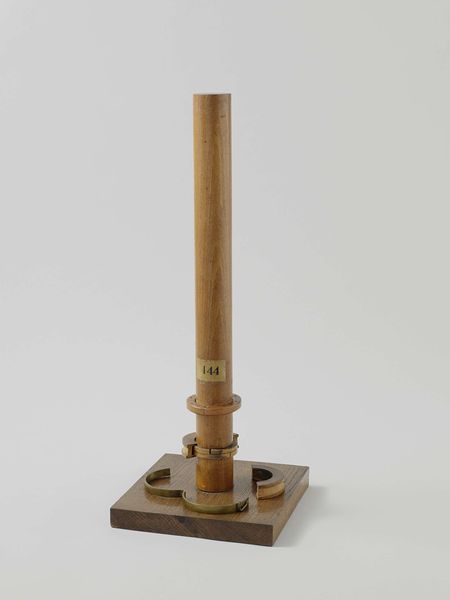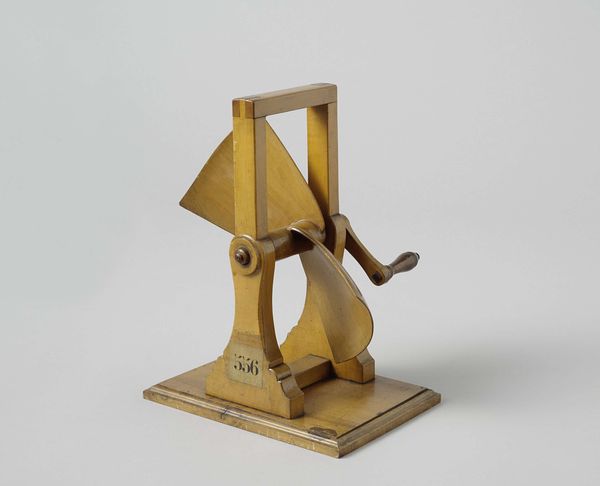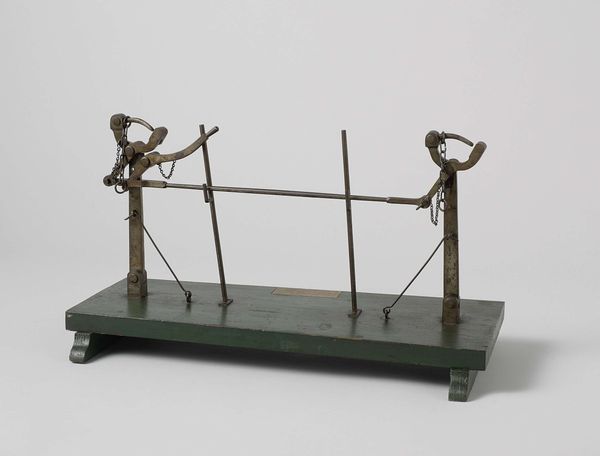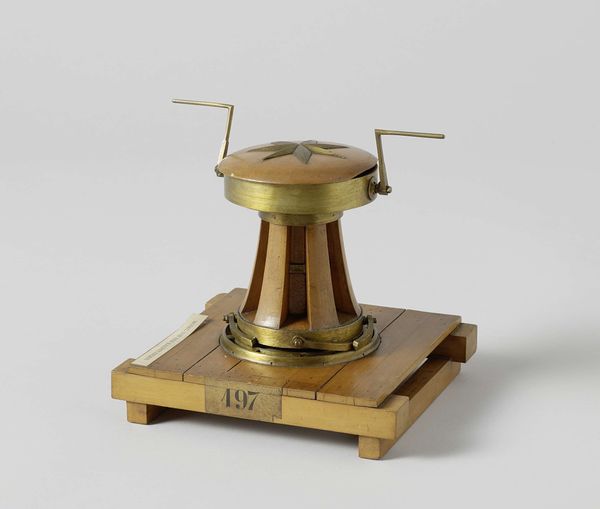
metal, found-object, sculpture, wood
#
metal
#
sculpture
#
found-object
#
sculpture
#
architecture model
#
wood
Dimensions: height 49.5 cm, width 33.8 cm, depth 14 cm
Copyright: Rijks Museum: Open Domain
Editor: This is Engelbert Lucas’s "Model of an Optical Telegraph for Ships," created around 1836. The piece consists of metal, wood, and found objects. I'm struck by how meticulously constructed it is; each element seems perfectly placed. How do you interpret this work from a formalist perspective? Curator: It's a fascinating object, isn't it? From a formalist perspective, my attention is drawn to the interplay of horizontal and vertical lines, and the contrasting textures of the wood and metal. Consider the repetition of rectangular shapes – the wooden flags, the base – against the slender, almost fragile, metal framework. This tension creates a dynamic visual experience. The levers further underscore dynamism as an integrated element in its structural composition. What do you make of the negative space within the structure? Editor: I hadn’t really noticed the negative space, but now that you point it out, it’s integral to the design! It gives the piece a sense of lightness and airiness, preventing it from feeling too dense or heavy. Without those gaps, I think the entire system would collapse, visually speaking. Curator: Precisely! The void functions much like a structural element within the whole; moreover, examine the use of color – the muted tones of the wood contrasting with the polished metal. This contrast contributes to the overall visual harmony. Does the symmetrical arrangement around the central axis imply further intent on the part of the artist? Editor: I suppose the symmetry brings a sense of order and balance to the model. Now, considering the visual harmony between color, shape, form, space and arrangement... It all brings the elements together to form one system – something that communicates an idea. It’s no longer just about individual parts; it is more a representation of something greater. Curator: An excellent point, one to consider indeed, though Form follows Function rather than representation. Editor: I see it now! Thanks for the new perspective.
Comments
No comments
Be the first to comment and join the conversation on the ultimate creative platform.
